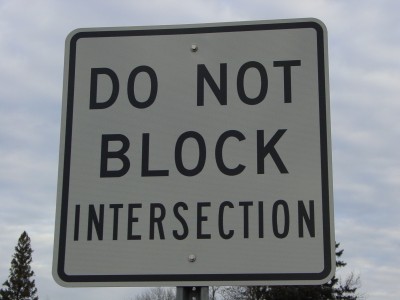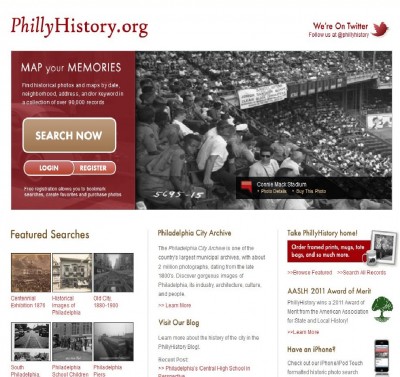Finding the intersection of technology and public history
13 April 2016 – Deborah Boyer
TPH 38.1, "Chasing the Frontiers of Digital Technology" responses, digital media, methods, public engagement, digital history, social media, The Public Historian

Photo credit: The Tire Zoo
Digital technology has enabled public historians, cultural heritage professionals, and history students to collaborate with diverse audiences and explore history’s role in civic engagement in ways previously unimagined. The partnership between the Virtual City Project and the Restoration Group described by Andrew Hurley in “Chasing the Frontiers of Digital Technology: Public History Meets the Digital Divide” demonstrates the exciting possibilities as well as challenges advanced digital tools provide, especially in the face of limited budgets, long software development cycles, and varying levels of digital access.
While creation of a 3D-model viewer and editor may be beyond the scope of many digital humanities projects, many face issues similar to those Virtual City encountered when released to the public. Among those challenges are the difficulties of connecting both with populations with limited digital access and with those accustomed to viewing and sharing online content through social media. Public historians must keep both challenges in mind from the beginning of project development if they hope to reach a diverse audience who will share the project with others.
The Virtual City team is not alone in discovering that attracting an online audience can be difficult—particularly if the target audience of the project includes socioeconomic groups who tend to access online resources through mobile devices rather than from a desktop or laptop computer. A 2015 report compiled by the Pew Research Center on smartphone use in the United States found that 19 percent of Americans “rely to some degree on a smartphone for accessing online services.” The same study found that individuals with low household incomes, lower levels of educational attainment, who are under the age of twenty-nine, and are non-white rely most heavily on smartphones for online access.
Even individuals with multiple options for accessing the Internet frequently use smartphones to view social media, check email, and receive texts while away from their home or office. While this is anecdotal, many smartphone owners can likely attest to how often they reach for their phones to fill the small gaps of time—waiting for a bus, stuck in the school pick-up line, at the doctor’s office. The portability of smartphones makes them ideal for quickly viewing information or scrolling through a list of social media posts.
They are less useful for viewing digital history projects that use sophisticated technical tools or encourage viewers to thoughtfully engage in discussion of complex issues. Individuals who primarily access the Internet via smartphone thus may have significantly more difficulty viewing technically complex digital history projects. Projects that require installation of other software or even just a larger screen size may be completely inaccessible.

Homepage of PhillyHistory.org.
I serve as the project manager for PhillyHistory.org, a website featuring historic photographs from the Philadelphia City Archives. Since the project launched in 2005, we have seen a dramatic shift in how people discover our site and how they engage with the photographs. In 2012, 13 percent of visits to PhillyHistory.org were from mobile or tablet devices, according to Google Analytics. By 2015, that number had risen to 34 percent, and we expect that trend to continue in 2016. The increase in visitors accessing the site via mobile device is likely linked to the Facebook mobile app, the third highest source of visitor traffic in 2015. The origin of four percent of all sessions, Facebook mobile is a minor source of referrals to PhillyHistory compared to Google searches and direct visits to the site URL, but it still was responsible for over 8,000 visits.
Why is Facebook generating so much traffic? It is difficult to pinpoint exact posts, but we have some individuals and groups who regularly share PhillyHistory.org photos and blog posts on Facebook. Visitors increasingly use social media as a place to keep abreast of current events and learn about new projects. They then help spread the word about the material on PhillyHistory to new audiences.
The downside is that visitors who come to us through clicking on a Facebook post may discover the source of the image or read the blog post but then quickly move onto something else. Visitors on mobile devices spend somewhat less time on PhillyHistory, though they may engage in discussions about the photos on Facebook or Twitter. While we are glad to see the photos sparking discussions about the past, it is difficult to capture the information and stories shared in those social media conversations.
A social media presence and mobile-friendly website are two means of increasing the likelihood that diverse audiences will find and use a digital history site. However, such initiatives require both financial and human resources that may not be included in the funding for the project. The full PhillyHistory site is usable via mobile device and a web app is available, although both could use an update to improve user experience. While each image on PhillyHistory includes a button to allow visitors to share it on their Facebook pages, we currently do not maintain our own Facebook page. Regularly posting helpful content and responding to Facebook comments can be time consuming and is beyond the resources we have available at this time. We have opted, instead, to maintain a Twitter account.
At its core, PhillyHistory is a photo database with an accompanying blog. Both can be easily shared on social media and are accessible via mobile devices. What about digital history projects that cannot be easily transitioned to such a cross-platform experience? Must public historians forgo the use of new technology that requires more computing resources or will not work well on smartphones? Not at all. But we need to understand, as the example of the Virtual City project demonstrates, that supporting interaction with a digital project will require many of the traditional community-engagement activities familiar to all of us and that our projects may become opportunities for teaching digital literacy as much as for sharing historical information.
Understanding the digital divide and how people access the Internet are only two of the issues facing digital humanities projects. The pace of technological change can cause grant-funded projects with limited time for software development to fall behind digital trends. Educational sites that lack funding for regular design upgrades and enhancements can feel outdated and less engaging than other websites. We may be excited about a new software tool, but by the time the grant is written and the funding awarded, it may already have been usurped by something else.
Despite these challenges, we should continue to focus on building projects that enable our collaborators to grow their digital skills, that share history with new audiences, and that encourage communities to work together to actively engage with the development and preservation of their neighborhoods. While we will almost never have a team of dozens of software developers, web designers, social media specialists, and writers on a digital humanities project, we can focus on providing a “classic,” well-organized, informative user experience that demonstrates how well the digital aligns with the values of public historians.
~ Deborah Boyer is the project manager for digital humanities and urban forestry projects at Azavea, a geospatial software company based in Philadelphia. She received her M.A. in public history from Loyola University Chicago and teaches digital history classes at Temple University and Villanova University.
Editor’s note: In “Chasing the Frontiers of Digital Technology,” published in The Public Historian (38.1), Andrew Hurley discusses the implications of the digital divide when working with diverse audiences and striving for public engagement. This is the fourth of five posts that will be published by The Public Historian responding to Hurley’s article.




Great piece!
On the question of why Facebook driving is so much traffic – I think I have a good guess. Older people tend to spend more recreational time studying, reading, researching history than younger, and of the social media platforms, Facebook is now considered the “old person’s” social network. If your grandma is on any social media, it’s probably FB. It also has lots of nostalgia and local history-focused groups that are quite active.